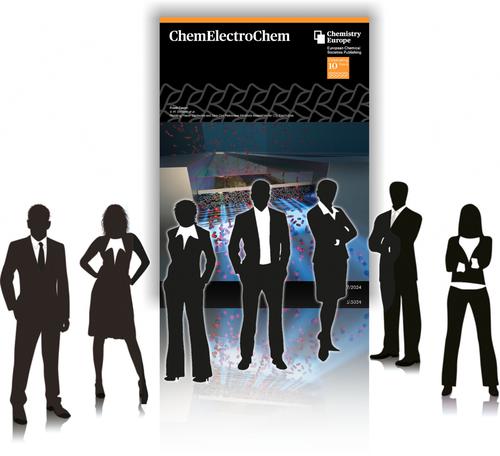当前位置:
X-MOL 学术
›
ChemElectroChem
›
论文详情
Our official English website, www.x-mol.net, welcomes your feedback! (Note: you will need to create a separate account there.)
Modeling Planar Electrodes and Zero‐Gap Membrane Electrode Assemblies for CO2 Electrolysis
ChemElectroChem ( IF 4 ) Pub Date : 2024-04-04 , DOI: 10.1002/celc.202400226 Victoria M. Ehlinger 1, 2 , Dong Un Lee 3 , Tiras Y. Lin 1, 2 , Eric B. Duoss 2, 4 , Sarah E. Baker 5, 6 , Thomas F. Jaramillo 3, 7 , Christopher Hahn 5, 6
ChemElectroChem ( IF 4 ) Pub Date : 2024-04-04 , DOI: 10.1002/celc.202400226 Victoria M. Ehlinger 1, 2 , Dong Un Lee 3 , Tiras Y. Lin 1, 2 , Eric B. Duoss 2, 4 , Sarah E. Baker 5, 6 , Thomas F. Jaramillo 3, 7 , Christopher Hahn 5, 6
Affiliation

|
Invited for this issue's Front Cover are researchers from the Carbon Initiative at Lawrence Livermore National Laboratory and the SUNCAT Center at Stanford University. The front cover shows a cross‐section of the cathode of a membrane electrode assembly for CO2 electrolysis looking down the feed channel. CO2 molecules flow down the channel and diffuse up through the gas diffusion layer to the silver catalyst, where CO2 reacts to form CO, while also competing against hydrogen reduction from water. Some of the CO2 molecules react to form bicarbonate and carbonate ions, which can diffuse across the membrane, where they react at the anode to form CO2 again. The top of the image shows CO2 that has crossed over through the membrane into the anolyte. Cover design by Brendan Thompson. Read the full text of the Research Article at 10.1002/celc.202300566 .
中文翻译:

用于二氧化碳电解的平面电极和零间隙膜电极组件建模
本期封面邀请了来自劳伦斯利弗莫尔国家实验室碳倡议和斯坦福大学 SUNCAT 中心的研究人员。封面显示了 CO 膜电极组件的阴极横截面2 电解从进料通道向下看。一氧化碳2 分子沿着通道向下流动,并通过气体扩散层向上扩散到银催化剂,其中 CO2 反应形成CO,同时也与水中的氢还原竞争。一些二氧化碳2 分子反应形成碳酸氢根和碳酸根离子,它们可以扩散穿过膜,在阳极反应形成 CO2 再次。图像顶部显示 CO2 它已经穿过膜进入阳极电解液。封面设计由布伦丹·汤普森设计。阅读研究文章全文:10.1002/celc.202300566 。
更新日期:2024-04-04
中文翻译:

用于二氧化碳电解的平面电极和零间隙膜电极组件建模
本期封面邀请了来自劳伦斯利弗莫尔国家实验室碳倡议和斯坦福大学 SUNCAT 中心的研究人员。封面显示了 CO 膜电极组件的阴极横截面



























 京公网安备 11010802027423号
京公网安备 11010802027423号